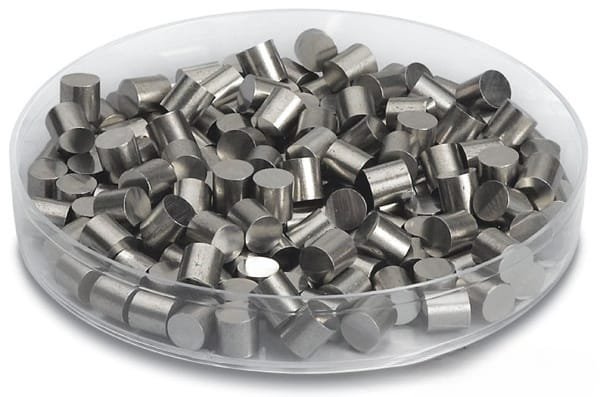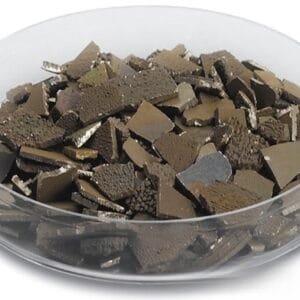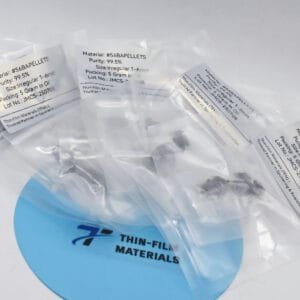Molybdenum Evaporation Material Description
Molybdenum (Mo) is a gray-metallic element renowned for its exceptional melting point, which is the third highest among all elements, after tungsten and tantalum. With a melting point of 2,617°C, a density of 10.2 g/cc, and a vapor pressure of 10^-4 Torr at 2,117°C, molybdenum exhibits remarkable strength and stability under high-heat conditions. Although it is found in various oxidation states in minerals, it does not exist naturally in its free form. Its robust properties make it ideal for alloying with other metals to produce corrosion-resistant materials used in tools, aircraft components, and electrical contacts.
In deposition processes, high-purity molybdenum evaporation materials are essential for achieving high-quality deposited films. TFM specializes in producing molybdenum evaporation materials with purity levels up to 99.95%, supported by stringent quality assurance measures to ensure reliable product performance.

Molybdenum Evaporation Material Specification
| Material Type | Molybdenum |
| Symbol | Mo |
| Color/Appearance | Grey, Metallic |
| Density | 10280 kg/m3 |
| Melting Point | 2,617 °C |
| Coefficient of Thermal Expansion | 4.8 x 10-6/K |
| Synonyms | Mo Pellets, Mo Pieces, Mo Evaporation Pellet, Molybdenum Pellets, Molybdenum Pieces, Molybdenum Evaporation Pellet |
Molybdenum Evaporation Material Application
Molybdenum evaporation materials are utilized in various advanced applications, including:
- Deposition Processes: Essential for semiconductor deposition, chemical vapor deposition (CVD), and physical vapor deposition (PVD) to produce high-quality thin films.
- Optics: Applied in the creation of wear-resistant coatings, decorative finishes, and high-performance display technologies.
Molybdenum Evaporation Material Packaging
We carefully handle our molybdenum evaporation materials during storage and transportation to prevent any damage. This meticulous approach ensures that the quality and integrity of our products are preserved in their original condition.
Get Contact
TFM offers molybdenum evaporation materials in a range of forms, purities, sizes, and price points. We specialize in high-purity e-beam evaporation materials, characterized by optimal density and minimal average grain sizes. For current pricing on evaporation pellets and other deposition materials not listed, please contact us with your inquiry.
Ordering Table
| Material | Size | Quantity | Purity | Notes | Part Number |
| Molybdenum | 1/4" Dia. x 1/2" Length | 1 lb. | 99.95% | — | EVMMO35QXH |
| Molybdenum | 1/4" Dia. x 1/4" Length | 1 lb. | 99.95% | — | EVMMO35QXQ |
| Molybdenum | 1/4" Dia. x 1/4" Length | 25 g | 99.95% | — | EVMMO35QXQA |
| Molybdenum | 1/4" Dia. x 1/4" Length | 50 g | 99.95% | — | EVMMO35QXQB |
| Molybdenum | 1/4" Dia. x 1/4" Length | 100 g | 99.95% | — | EVMMO35QXQD |
| Molybdenum | 1/8" Dia. x 1/4" Length | 1 lb. | 99.95% | — | EVMMO35EXQ |
| Molybdenum | 1/8" Dia. x 1/8" Length | 1 lb. | 99.95% | — | EVMMO35EXE |
| Molybdenum | 1/8" Dia. x 1/8" Length | 100 g | 99.95% | — | EVMMO35EXED |
| Molybdenum | 1/8" Dia. x 1/8" Length | 250 g | 99.95% | — | EVMMO35EXEJ |
| Molybdenum | Approx. 1/4" x 1/4" Pieces | Per Gram | 99.95% | EVMMO35SPL10 |

 MSDS File
MSDS File



Reviews
There are no reviews yet.